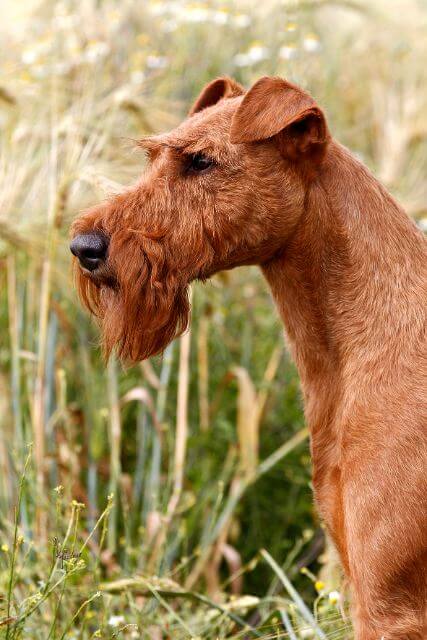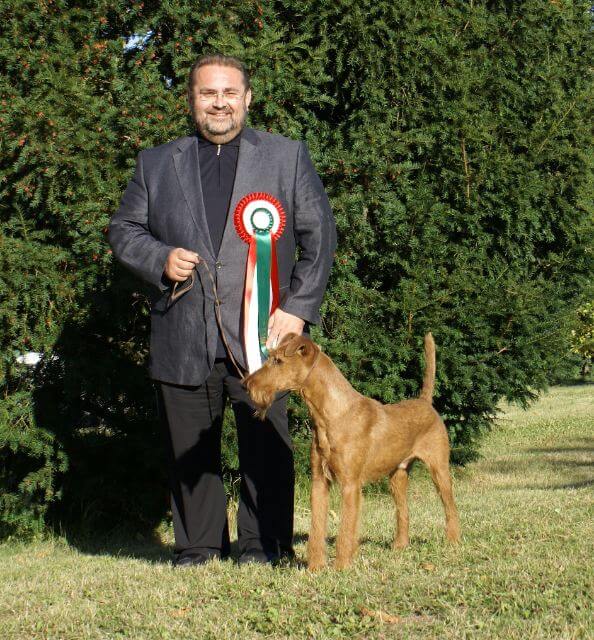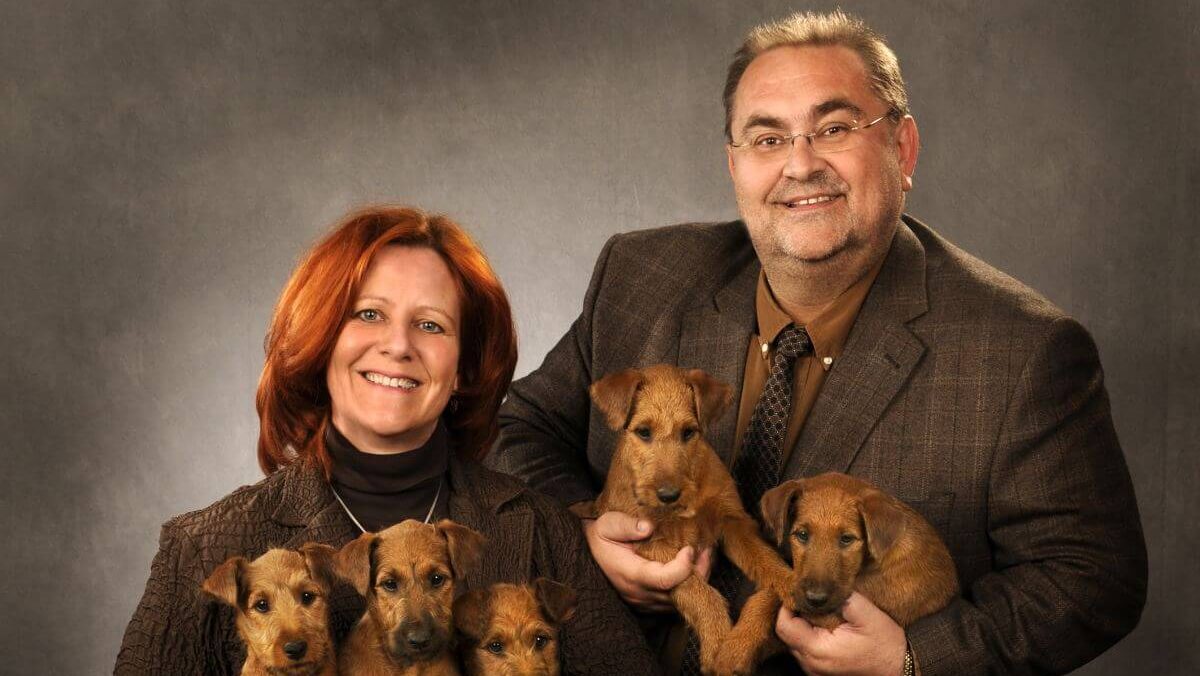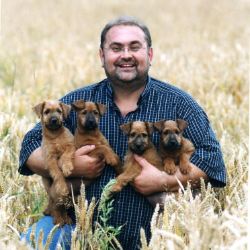This article was originally published in Showsight Magazine, September 2013 issue.
Take a Look at the Irish Terrier Type
Let me start with: there is a saying, “To know Paddy is to love him”. Dogdom has many breeds but only one Irish Terrier. Here is a dog full of blarney, fire and the ability to charm you out of a house and home. His loyalty only ends with the breaking of a great heart. Here is a dog that has inspired writers such as Jack London, the author of Jerry of the Islands. All dogs possess the ability to listen to your tales of woe, but the Irish Terrier is quite capable of understanding and talking back. Is this too much to ask of a dog? Not of an Irish Terrier, for in this heart beats an old soul.
The Type
Type is not only the shape of the head or the ear carriage or the color or shape of the eyes. Type is more. We need to look at the length of neck and back, the structure and color of coat, the way the head will turn in balance when the dog moves, how the dog shows himself in the show ring, and the temperament especially within the family home and with children. But what is the correct type? This is so much more difficult to describe. For this, it is helpful to look back at the history of the breed. Study old pictures and sculptures, look at the origins of the standard, proportioning this to the time it was written bearing in mind the kind of work the breed was bred for at that time. Talking about type, it should always be remembered in the words of the late Mr. Gerry Sweeney (Teltown Kennels, Ireland): “If you lose the type you lose the breed”. For this article, the focus will be on the expression of the Irish Terrier, the notorious “D’hurty look”. It is the most important point for correct type.
Far too many Irish have lost nowadays the right look and at their angriest only look mildly angry. Once you have seen the D’hurty look it is never forgotten. It is a trademark of the Irish and should be guarded carefully. When judging and examining Irish Terriers over the world, experience has shown how important it is to look for the following essential points in the standard. The length of the foreface approximately equals the length from the hardly visible stop to occiput. Any deviation and the head will lose all proportion resembling “Pinocchio”. The under jaw must be strong with no sign of weakness. It should have good width otherwise this could create problems for correct teeth placement. No slackness between the cheeks and foreface. The area under the eyes must be well filled.

The skull must be flat; contracted or bumpy heads are unacceptable. The head should resemble a cigar box. Heads that are too fine and small are definitely wrong. The nose must be black as it is written in the standard. There is no other color. The eyes should never be close together as in the Wire Fox Terrier. They should be set moderately apart looking straightforward. The triangular shape as found in the Bull Terrier is wrong, the correct form is more between almond-shaped and round. The color should never be dark black as this will not allow for any expression of the soul of the Irish Terrier. Dark brown with dark pigment is most acceptable but never yellow or light eyes. A further important point is congruency of the ears. Incorrect placement of the ears will destroy the whole picture. Of great importance is the ear set which should not be set too high on the head or too close together. The erect or heavy hound ear is undesirable. By drawing a parallel line over the head of the Irish Terrier from the inner edge of the eye you will come to the place where the inner edge of the ear should be set.
The ears are dropping closely forward to the cheek with the tip to the outer edge of the eyes. The top of the folded ear should be well off the level of the skull, max. 1.5 cm. The upper edge (the fold) of the ear should not be horizontal and must be slightly dropped to the outside. The hair must be darker in color than the rest of the body and give the contrast and points more effort to the right expression. The beard and eyebrows should be from a good hard structure. The wiry and dense texture is preferable. Not too long so they make the expression soft. Not too short so the expression looks fragile. Even “moderately” is the secret word in the standard. Everything about the Irish Terrier is moderate, exaggerated is not acceptable.













